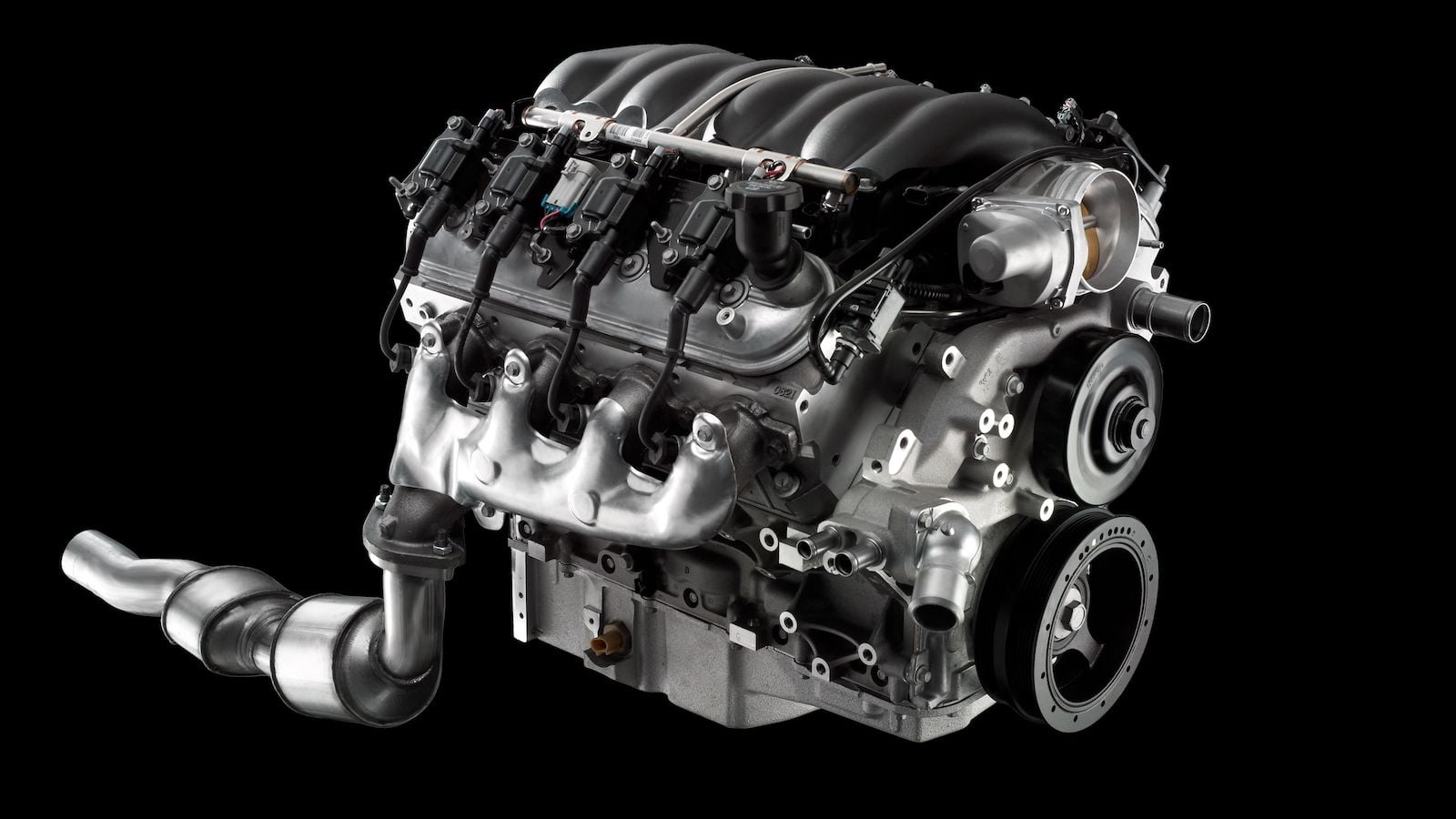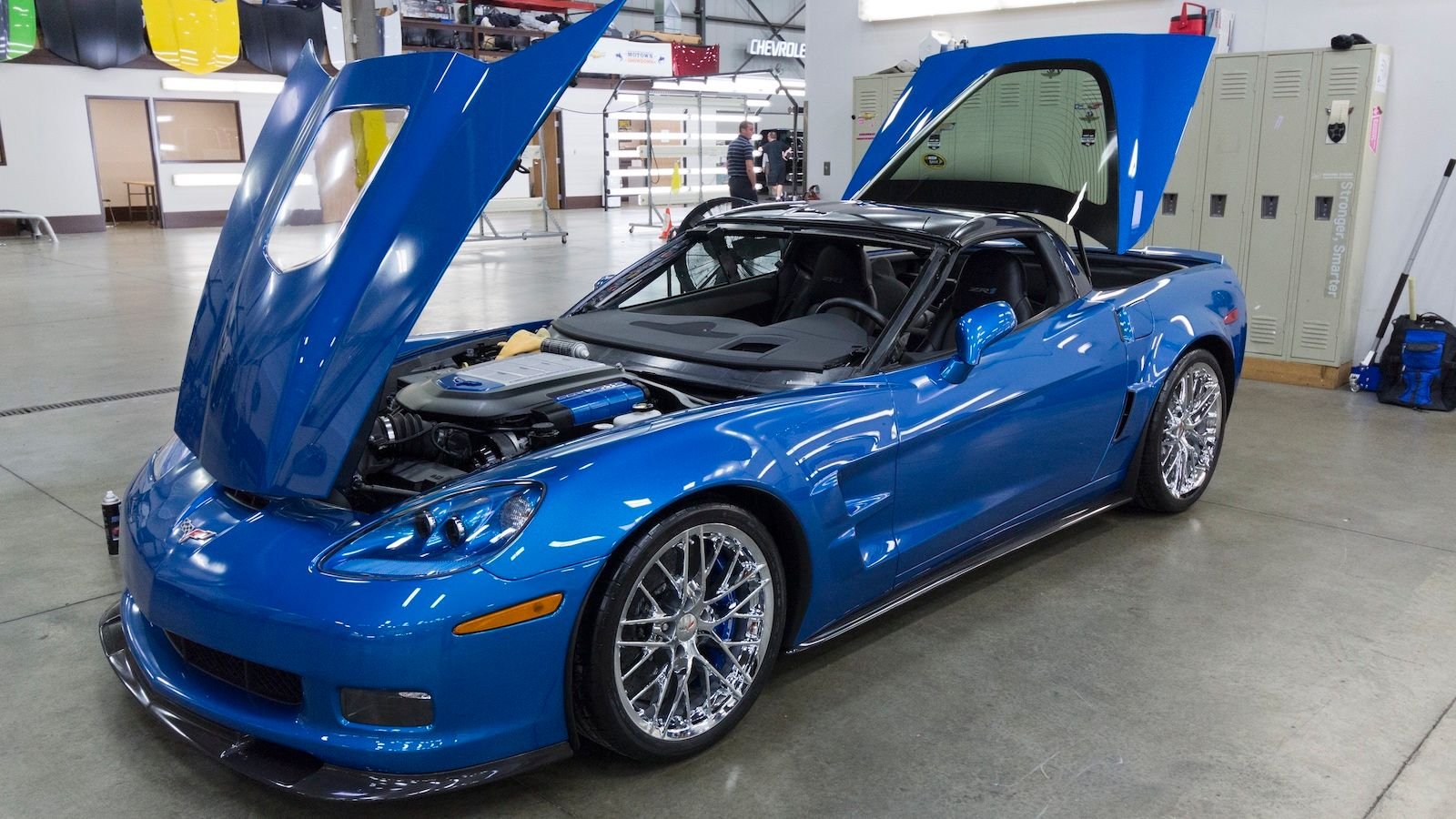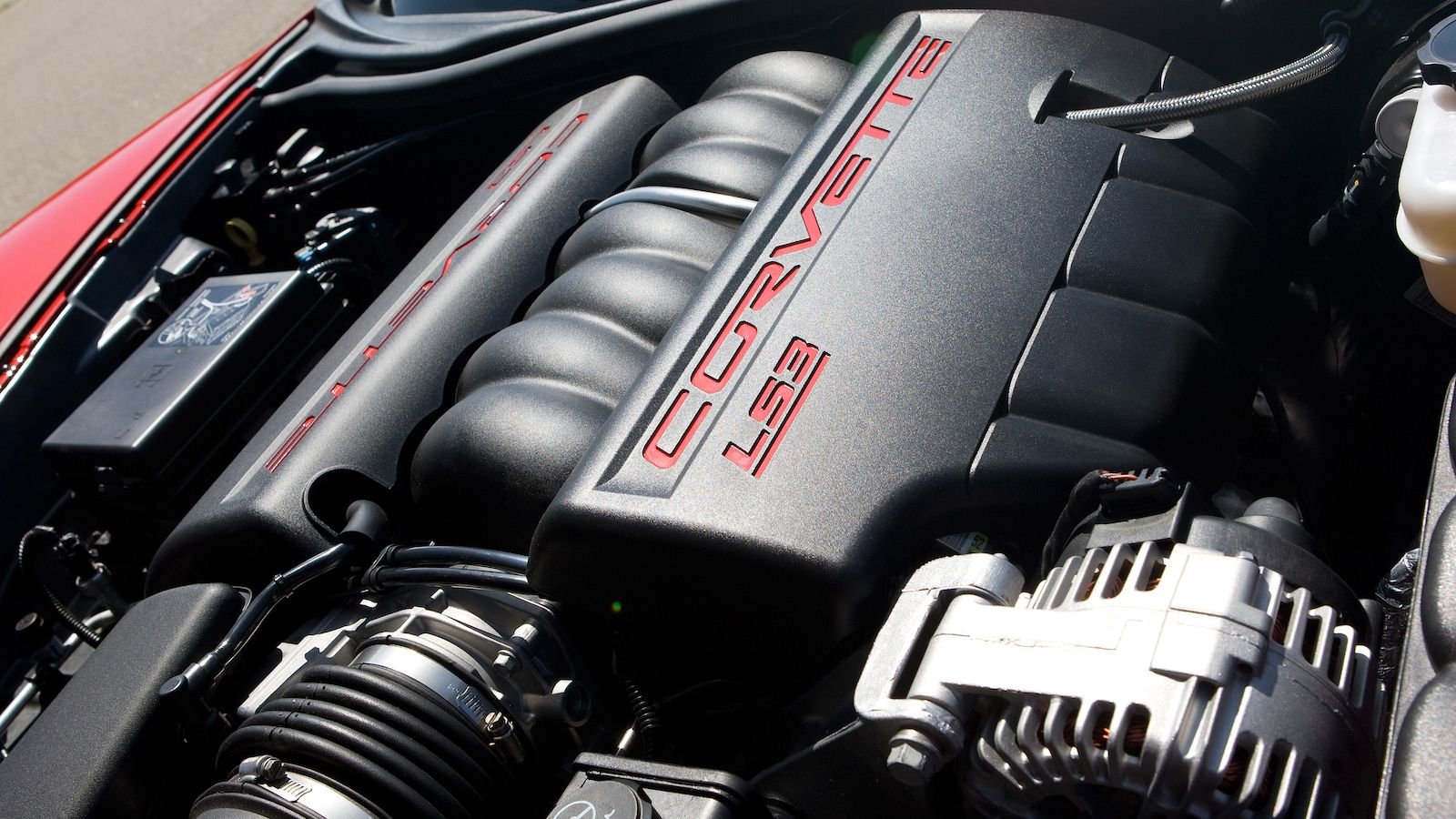Ranking the LS Engine Family from WORST to FIRST!
Ranking every LS family motor by power, sound, reliability, modularity, and importance revealed the very worst and very best LS motors of all time!


















Goals/Methods: Ranking the LS Engine Family from WORST to FIRST!
As we recently covered in Part 7 of our ongoing Corvette History series, General Motors tasked the head of its powertrain decision, Tom Stephens, to develop a successor to the small block Chevy V8 in the early 1990s. This new LS motor, named after its RPO code, needed to be more powerful, efficient, emissions-friendly, and reliable all at once.
Ultimately, Stephens and the GM Skunkworks team stuck with an old-school, but compact pushrod design that was updated with a variety of modern technologies, and the LS era was born in the engine bay of the 1997 C5 Corvette. Arguably the most popular motor for modern hot-rodding and swap projects, the Gen III and Gen IV LS engine family powered millions of GM vehicles until it was phased out for the Gen V LTs.
Given its lineage and popularity, we thought it would be fun to see if we could subjectively and objectively determine the 'best' LS motor. For simplicity's sake we're focusing only on the aluminum block variants with true LS designations, which includes two non-Corvette LS motors along with six Corvette powerplants --
- LS1 (1997)
- LS6 (2001)
- LS2 (2005)
- LS4 (2005)
- LS7 (2006)
- LS3 (2008)
- LS9 (2009)
- LSA (2009)
So we put together a spreadsheet in the office and called for people to vote, awarding up to 10 points, for each of these five categories:
- Power to capture the engine's overall output.
- Sound to analyze a motor's auditory potential (this is obviously very subjective and depends on a variety of factors).
- Reliability to factor in an engine's initial engineering and robustness.
- Modularity to contemplate how far folks can take the motor in the aftermarket.
- And Importance to help account for historical relevance.
For our purposes here, 50 would be a perfect score, 0 would be a total failure. Click NEXT or the RIGHT ARROW to advance through our list!
Photo Credit: Chevrolet
8. LS4 - 27.4 out of 50
Scores
- Power: 3.8
- Sound: 6.4
- Reliability: 7.8
- Modularity: 6.6
- Importance: 2.8
Vehicles
- 2005–2008 Pontiac Grand Prix GXP
- 2006–2009 Chevrolet Impala SS
- 2006–2007 Chevrolet Monte Carlo SS
- 2008–2009 Buick LaCrosse Super
The least powerful LS on the list. An aluminum 5.3L block reserved for GM's mid-2000s front-wheel-drive platforms. Like most LS motors, this one isn't terrible by any means, and we applaud GM for trying to bring some fun factor to FWD cars. But ultimately the cars were forgettable and suffered from relatively weak transmissions. Not exactly the LS4's fault, mind you. But it's not typically and engine most folks covet unless you're on a budget.
Image Credit: Wikimedia Commons, user name Sfoskett
7. LS2 - 31.17 out of 50
Scores
- Power: 6.17
- Sound: 7.5
- Reliability: 6
- Modularity: 7
- Importance: 4.5
Vehicles
- 2005–2007 Chevrolet Corvette C6
- 2005–2006 Chevrolet SSR
- 2006–2009 Chevrolet TrailBlazer SS
- 2006–2007 Cadillac CTS-V
- 2005–2006 Pontiac GTO
- 2005–2006 Vauxhall Monaro VXR
- 2005–2006 HSV Coupé GTO
- 2005–2006 HSV SV6000
- 2005–2008 HSV Clubsport R8, Maloo R8, Senator Signature and GTS
- 2005–2008 HSV Grange
- 2008–2009 Saab 9-7X Aero
With better heads from the LS6, more displacement, and more compression, the LS2 bumped power up to 400 ponies (vs 350 in the LS1). GM stuffed the LS2 into everything from sports cars and sedans to SUVs, and it's quite popular as a result. However, it's not quite as reliable as the LS1, LS6, or LS3, nor, as a more transitionary, evolutionary motor, is it particularly important. Some folks swear by the LS2; others say to avoid them. So it's ultimately a bit of a mixed bag from our perspective.
Photo Credit: Chevrolet
6. LS6 - 33.67 out of 50
Scores
- Power: 6.33
- Sound: 7.5
- Reliability: 8
- Modularity: 6.33
- Importance: 5.5
Vehicles
- 2001–2004 Chevrolet Corvette C5 Z06
- 2004–2005 Cadillac CTS V-Series
- 2007–2008 SSC Ultimate Aero TT
The first but certainly not the last LS motor to break 400 crank horsepower (although it debuted with 385). The 5.7L LS6 started with the same basic design as the LS1, but changes were made to strengthen the casting. GM engineers also added better-flowing heads (that would make their way to the LS2), a higher flowing intake (that would make its way to the 2001+ LS1), and a camshaft with a higher lift, among other improvements. A terrific motor for its size, but ultimately it lost out to higher-displacement 6.0L and 6.2L LS variants.
Photo Credit: Chevrolet
5. LS7 - 39.43 out of 50
Scores
- Power: 9
- Sound: 9.67
- Reliability: 5.17
- Modularity: 7.6
- Importance: 8
Vehicles
- 2006–2013 Chevrolet Corvette Z06
- 2013 Corvette 427 Convertible
- 2014–2015 Chevrolet Camaro Z/28
In a perfect world, the LS7 would come in at number one on this list. The highest-revving naturally aspired LS motor of all time, the 7.0L LS7 reached back across time and space to bring back the legendary Chevy 427. But unlike the original 427s, the LS7 isn't a big block. With a set of aftermarket heads and a choppy cam, it's hard to beat the auditory glory of a screaming LS7. But, alas, the king of naturally aspirated LSs has a notable, controversial flaw. The stock cylinder heads are known to drop valves, grenading the motors. And some have failed due to oil starvation caused by high g-forces. Naturally, each engine on this list has displayed its share of problems and failures, but the LS7 is notoriously unreliable when pushed hard in stock form.
However, with upgraded heads from a company like American Heritage Racing and a few other built-stronger/go-fast parts, you can turn the LS7 into an absolute monster ready for your next track season (or a longer life as a spirited-driving weekend toy.)
Photo Credit: Chevrolet
4. LS1 - 42 out of 50
Scores
- Power: 4.83
- Sound: 8
- Reliability: 9.67
- Modularity: 9.5
- Importance: 10
Vehicles
- 1997–2004 Chevrolet Corvette C5
- 1998–2002 Pontiac Firebird Formula & Trans Am
- 1998–2002 Chevrolet Camaro Z28 & SS
- 1999–2005 Holden Statesman
- 2001–2004 HSV GTO
- 2001–2005 Holden Monaro
- 2004 Pontiac GTO
The one that started it all. The 5.7L LS1 debuted in 1997 in the C5 Corvette with 345 horsepower, a nice bump up from the Gen II LT1 and LT4 V8s in the outgoing C4. Not only did the LS1 drop the disastrous Opti-Spark distributor, but it was also the first aluminum block in a base model Corvette. More power. Lighter. More efficient. Super amenable to modifications. Quite frankly, it changed the world, paving the way for every other motor on this list, and was the foundation for a series of iron and aluminum block motors for GM trucks and SUVs. It's not the most powerful motor, of course. These days, most folks gravitate toward 6.0s and 6.2s. But this one ranks a bit higher than you'd think thanks to its historical significance.
Photo Credit: Chevrolet
3. LS9 - 43.5 out of 50
Scores
- Power: 9.75
- Sound: 9.5
- Reliability: 8
- Modularity: 8
- Importance: 8.25
Vehicles
- 2009–2013 Chevrolet Corvette ZR1
- 2017 HSV GTSR W1
The most powerful LS family engine ever at 638 horsepower, the supercharged 6.2L LS9 debuted in the 2009 Corvette ZR1. Aka the very first factory-supercharged Corvette. It was based on the LS3, although changes were made to the cylinder walls, and featured a 2.3L four-lobe Eaton supercharger as well as other beefed-up components. This engine absolutely screams along with helping of supercharger whine. The only thing holding this one back is its relative rarity from the LS perspective.
Photo Credit: Chevrolet
2. LSA - 43.75 out of 50
Scores
- Power: 9.5
- Sound: 9.25
- Reliability: 8
- Modularity: 8.75
- Importance: 8.25
Vehicles
- 2009–2015 Cadillac CTS-V
- 2012–2015 Chevrolet Camaro ZL1
- 2014–2017 HSV GTS GEN-F
Generally speaking, we're splitting hairs when it comes down to the LSA being, at least in this vote, 'superior' to the LS9. The LS9 is going to offer more power (638 hp vs 580 hp) and better internals and its importance as the first supercharged factory Corvette motor. But ultimately the LSA, with its smaller 1.9L Eaton supercharger, may have a touch more popularity because it was more widely produced and because it helped make a larger variety of vehicles, including the CTS-V wagon, legends in their own time. It was also, until 2021, available as a 50-state-legal Chevy Performance E-ROD crate motor. Regardless of its specific ranking, the LSA is a killer platform that could only be topped by one motor.
Photo Credit: Chevrolet
1. LS3 - 44.4 out of 50
Scores
- Power: 7.6
- Sound: 8.2
- Reliability: 9.8
- Modularity: 10
- Importance: 8.8
Vehicles
- 2008–2013 Chevrolet Corvette
- 2011 Jensen Interceptor R
- 2010–2015 Chevrolet Camaro SS (manual only)
- 2015 Drakan Spyder
- 2008–2017 Various Holden vehicles
- 2009 Pontiac G8 GXP
- 2014–2017 Chevrolet SS
The 6.2L LS3 may not be the most powerful LS engine, but it is arguably the best all-around motor for the way it combines naturally aspired, quick-revving power with a smooth torque curve, a reputation for bullet-proof reliability, and aftermarket popularity. It is the culmination of everything that made the LS series great. And yet it remains simple compared to the direct injection LT motors with the controversial active fuel management that seems to be reducing engine component longevity. The LS3 was also the final LS motor to be produced in an American-branded car (the Chevy SS, which we know is a rebadged Holden), and it remains in production as a Chevrolet Performance crate motor today.
Photo Credit: Chevrolet
